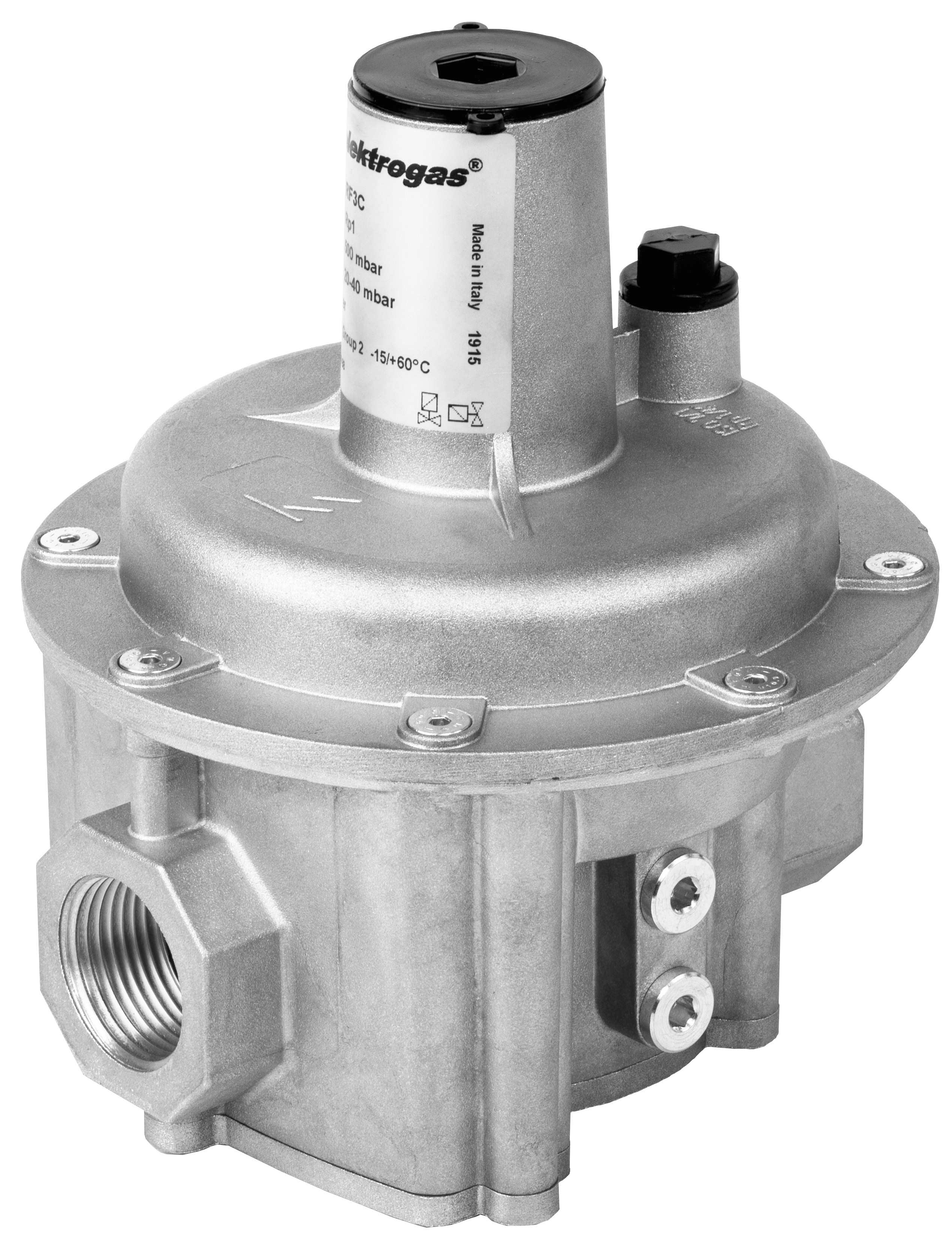Ever wondered what a gas pressure regulator is, or why you need it in your system? We’ve put together this FAQ to help answer your questions!
What is a gas regulator?
A regulator is a valve with the job of regulating system pressure. In industrial combustion, the two types of regulators we see most often are pressure reducing regulators and ratio regulators.
A pressure reducing regulator is used to reduce a high-pressure input to an output specific to the system it serves. The presence of a pressure reducing regulator is required by NFPA86. If the inlet pressure is higher than what components downstream of the pressure reducing regulator can safely handle, NFPA86 code requires some method of cutting off the flow of gas in the event of a pressure spike, or failure of the gas pressure regulator. The RS-125, for example, incorporates a “slam shut” valve, also called an “over pressure cut-off” (OPCO). This valve must be manually reset once the problem is corrected.
Ratio regulators, like the RAG, are used to output gas pressure according to the cross-connected air pressure. Ratio regulators are also called “cross-connected” regulators for this reason. While pressure reducing regulators are most often found on the main gas manifold, ratio regulators belong on burner trains. We suggest using a ratio regulator at each burner, for precise control of the gas/air ratio. A ratio regulator might have a bypass to facilitate light-off. RAG has an adjustable bypass as standard.
How do they work?
A pressure reducing regulator’s primary function is to match the flow of gas through the regulator to the demand for gas placed upon it, while maintaining a sufficiently constant output pressure. The desired output pressure is controlled using a spring. Many pressure reducing regulators, like R/RF and R/RS-125, have a range of springs that can be swapped out if the desired pressure output changes. Inside the regulator are special diaphragms which expand and contract according to the pressures at the inlet and outlet. The diaphragm concerned with inlet pressure is the “compensating” diaphragm. The diaphragm which interfaces with the outlet pressure is the “working” diaphragm. Some regulator models also employ a “safety” diaphragm, a third, stronger diaphragm designed to to prevent leaking in the event of a failure of the other two. It’s important to study the requirements of your system, the requirements of the plant, local codes and standards, as well as NFPA86, for guidance on venting gas to a safe location in the event the pressure reducing regulator fails.
Pressure reducing regulators must be able to handle both the incoming pressure and the maximum flow requirements of the combustion system. Every manufacturer’s pressure reducing regulator is different. Specifying a pressure reducing regulator is never as easy as knowing the pipe size.
There must be some fail-safe in place to guard against failure of the pressure reducing regulator. One such fail-safe might be a vent line which terminates at a safe location, often outside the building. Another is called “internal vent limiting” (IRV), a method of restricting the amount of gas that can escape from the regulator all at once in the event of a failure. The last, mentioned above, is a safety diaphragm, stronger than the other diaphragms used in the regulator, catching and preventing gas from venting through the regulator body.
How do you select a pressure reducing regulator?
There are four questions we must ask when specifying a pressure reducing regulator.
The first question is, what is the maximum inlet pressure? This is the maximum possible pressure the regulator might see. It’s imperative the regulator is rated for this pressure, otherwise the diaphragms are likely to rupture and fail.
What is the desired outlet pressure? This is our second question and it is no less important. The desired outlet pressure is what we’ve calculated we need downstream of the regulator for the system to run properly. Many regulators have a range of available springs, meaning they can be made to deliver a wide array of outlet pressures, and the outlet pressure you need can only be achieved with the right spring. Further, some applications may demand an extremely severe pressure drop across the regulator. This may require a second (sometimes called a “step down”) pressure reducing regulator.
What is the maximum flow rate? The flow rate is directly related to the system capacity. Said another way, the amount of power (BTU/hr or KW) the burners input into the furnace or oven when they are operating at their maximum firing rate. When selecting a regulator, we must ensure it can handle the maximum flow rate, otherwise it won’t be able to keep up with the demands of the system, and you may have trouble reaching high-fire.
Our final question, but no less crucial, asks what is the fluid? The medium moving through the regulator may be referred to as the fluid. We’re normally talking about natural gas, but other fuel gases are used, such as propane, biogas, coke oven gas, etc. Knowing the type of gas we’ll be using allows us to accurately size the regulator according to flow demand. It’s also important to check that the regulator is suitable for the gas we’re using.
For Automation
Please visit olstrad.com to learn more about our automation processes!












